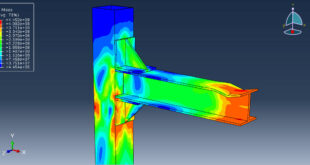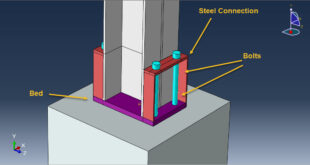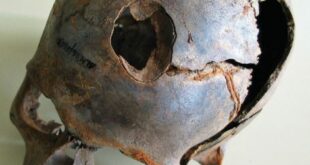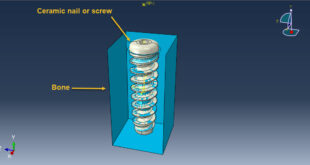In this tutorial, the Numerical analysis of the dynamic response of aluminum foam core sandwich panels subjected to air blast loading in Abaqus has been investigated. The two aluminum skin sheets are modeled as a three-dimensional solid part. The aluminum foam as the core is modeled as a three dimensional solid part. The up-gradation of ship protection level attracted a great many attentions from the naval departments and related scholars. The potential improvement by optimizing the design of a conventional stiffened plate has been exploited sufficiently over a century. Therefore, it becomes impossible to meet the requirements of new weapon threats if the structural weight is limited. Cellular foam core sandwich structures, as a key member in the family of lightweight structures, are of current research and interests due to their high strength-to-weight ratio, stiffness-to-weight ratio, and superior energy absorption capability. Especially, the microstructure of foam cores endows them with the ability to undergo large plastic deformation under relatively long low plateau stress, and thus they could continue to behave excellent blast resistance before collapsing into a more stable state or fracture. Over the past few decades, extensive studies of cellular foam core sandwich structures have been reported on their dynamic responses under impact/blast loadings. In the numerical model, a Johnson-Cook material model available in Abaqus is employed to model the behavior of aluminum skin sheets. The Johnson-Cook damage is used to model damage and failure in the aluminum sheets. The Crushablefoam plasticity is used as an isotropic material with hardening. You can see a figure of the assembled parts at below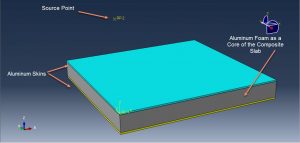
The dynamic explicit step is used to model the dynamic solution of the blasting procedure. The perfect contact is assumed between the aluminum foam and aluminum sheets. The CONWEP blast procedure is used to model the detonation of TNT as an air blast technique. The ten kilograms TNT is used. The fixed boundary condition is assigned to the outer surfaces of the slab and symmetry boundary to the X and Y direction because just one-quarter of the whole model is used in this simulation. The mesh should be fine to obtain good results
After the simulation all results such as stress, strain, damage, displacement….are achievable. The metal foam has a large plastic deformation and that is the reason for energy absorption. You can see some figures for the results below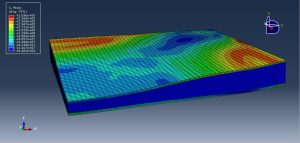
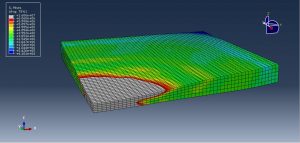
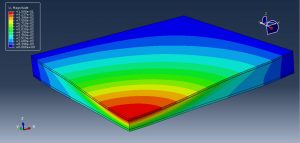
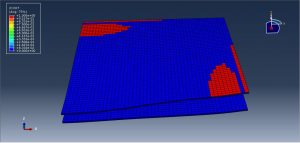
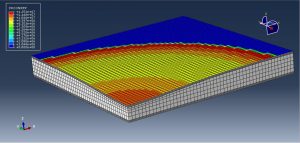
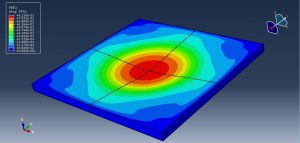
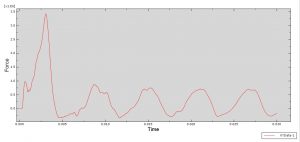
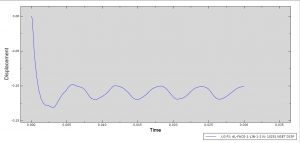
You can provide CAE ,INP,and English video files of this simulation here. The cost of these files is Twenty-Eight Euros. you can click on the bellow bottom to beginning process
You can purchase the tutorial through a PayPal account, a Visa, or a Master card, just before payment,send me an email to this address: karampourp@gmail.com
 آموزش آباکوس از مقدماتی تا پیشرفته/شبیه سازی در آباکوس/فیلم های آموزشی آباکوس آموزش آباکوس/ مقدماتی تا پیشرفته/شبیه سازی پدیده های مختلف در آباکوس/دانلود ویدئوهای آموزشی آباکوس
آموزش آباکوس از مقدماتی تا پیشرفته/شبیه سازی در آباکوس/فیلم های آموزشی آباکوس آموزش آباکوس/ مقدماتی تا پیشرفته/شبیه سازی پدیده های مختلف در آباکوس/دانلود ویدئوهای آموزشی آباکوس
